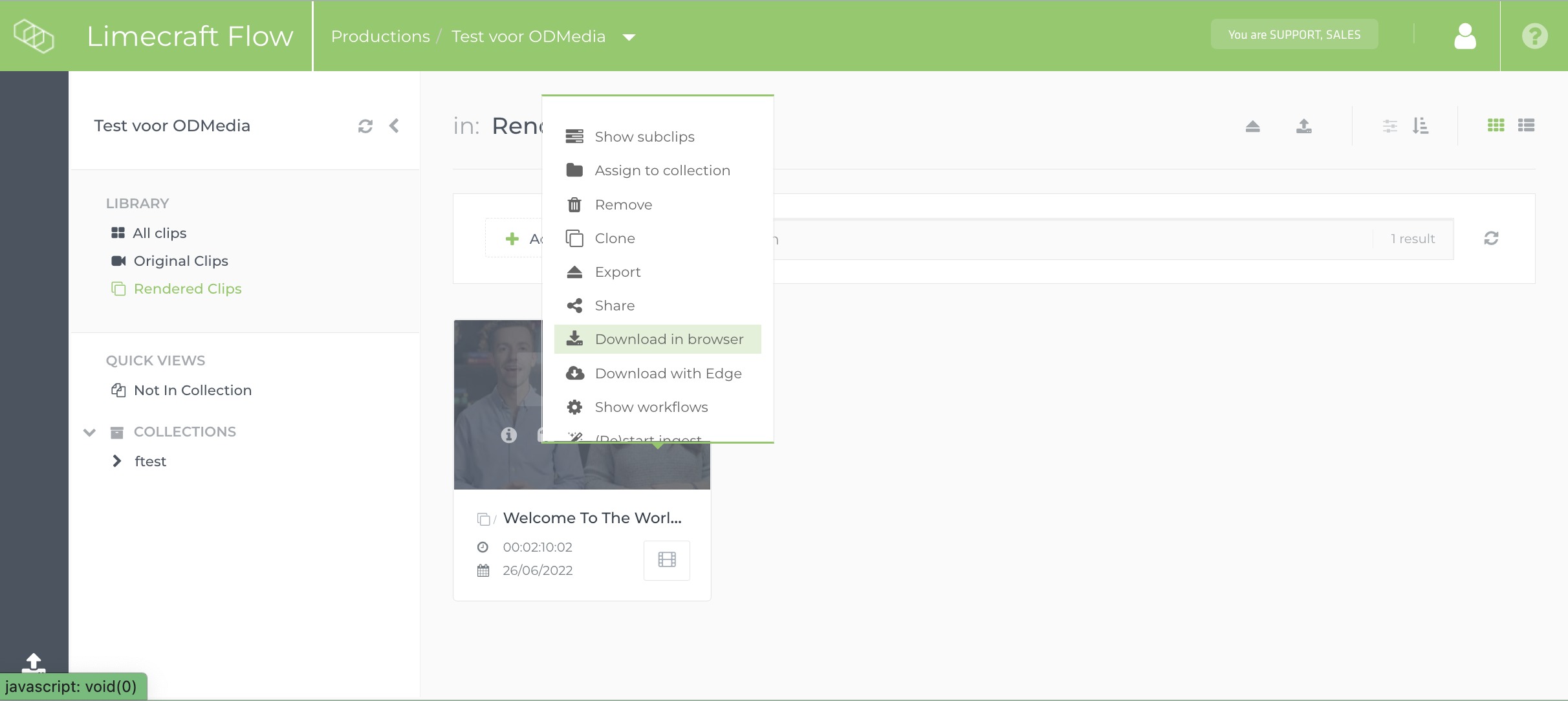TABLE OF CONTENTS
- Before you Begin
- Introduction
- Step 1 - Creating a new videoclip with burned-in Subtitles
- Step 2 - Accessing the rendered Versions
- Step 3 - Exporting clips with burned in Subtitles
- Related articles
Before you Begin
Please note that the option to export video with embedded or burned in subtitles is a paid-for option, available to users in Pro, Team, and Enterprise subscriptions plans. The option must be enabled by your Account Administrator.
If the option is currently not accessible, please consult your Account Administrator.
Introduction
While we would typically advise to make subtitles available as a separate file alongside the video to allow end-users to switch subtitles on and off, or to select the language, we noticed that there is a growing need to produce media with embedded or "burned in" subtitles.
There may be several reasons to encode subtitles as open captions, i.e. in the pixels rather than to use the player to display them in overlay on top:
- some platforms (like Instagram) don't allow you to upload subtitle files
- you may want to use brand-specific fonts
- you may want to control other details of the layout (e.g. black subtitles on a white background)
When using Limecraft for creating or processing subtitles, you can now export a version of the videoclip with subtitles encoded in the pixels. To do so, we create a new rendered version of the clip, which will be visible in the library as a separate clip linked to the original media. In this article, you'll learn how to export video with rendered or burned in subtitles.
Step 1 - Creating a new videoclip with burned-in Subtitles
As soon as you finished editing the subtitles or upon successful import of existing subtitles, you have the option to create a new version of the clip with encoded subtitles.
Click on the export button and select 'Burn into video'.

Before we can execute the workflow, you will need to specify the input and output encoding profiles or file formats.

"Input source" refers to the version of the clip that you want to use as source. In particular, you might want to use the highest possible video resolution to avoid encoding artefacts. When using a high-resolution version which is on local storage, it will first have to be retrieved and staged as online storage. Alternatively, you can use the web proxy as a shortcut.
"Output encoding profile" refers to the encoding profile and file format of the new clip with encoded subtitles. If you intend to use the new clip for online distribution, 'Web Proxy HD' will serve the purpose in most cases. If the new version is intended to be distributed via television or VoD, you might want to use a video encoding profile that allows a higher image resolution. Which file formats are supported by Limecraft are shown in this article. Please contact your Limecraft account manager to add a new encoding profile.
Upon choosing the right input and output encoding format and clicking ‘Start’, the encoding job will start. The time it takes depends on the parameters chosen in the dialog and the duration of the video.

Once the job completes, it will look like below.

As a result of the process, a new clip has been added to the library albeit connected to the original asset. The final dialog allows you to navigate directly to the rendered clip.
Step 2 - Accessing the rendered Versions
Accessing the rendered versions via clip details
A Subtitle Burn In workflow creates a rendered clip linked to the original clip. With the tab 'Rendered Media' in the clip info screen, you can navigate between a clip and its rendered clips.
Note: If the clip is not a rendered clip, or hasn’t been rendered, you will not see the ‘Rendered Media’ tab.

If you click the name in a table row, it will lead you to that particular rendered clip.
Accessing rendered Clips via the Library
To get an overview of all rendered versions in the library view, there is an extra section in the left sidebar of the library which lets you choose between All clips, Original Clips and Rendered Clips.

The original clips is selected by default.
Accessing the rendered Versions of a particular Clip in the Library View
On a clip that contains renders, it is possible to show a panel with all the rendered clips by clicking the render button:

Looking for rendered Versions via the Search Engine
To access the rendered versions of clips via the search engine, you can use the following filters.
- Render Type The type of render, intended for future use
- Rendered Subtitle Language To search based on the language.
- Rendered Subtitle Preset To search based on which subtitle preset was used.
- Render Gives you the option between 'has renders' and 'is render'.

Step 3 - Exporting clips with burned in Subtitles
Upon successful creation of rendered versions of clips with encoded or burned in subtitles, you can export one or more versions using one of the various download options within the library or the clip detail. Alternatively, it is also possible to use them for sharing online (without first having to download the clip).

Related articles
- How to adapt the design of the subtitles: How to configure Subtitle Presets or 'Spotting Rules'
